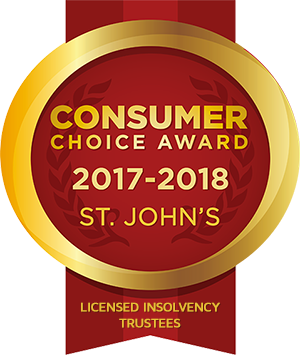Personal Bankruptcy in Newfoundland
Bankruptcy is not something most people want to consider, yet it may be the necessary step you need to take to regain control of your financial future.
Talk to Us Today
Who can file for bankruptcy in Newfoundland?
People, companies, partnerships and executors of wills or administrators of estates who are “insolvent” and owe at least $1,000 are eligible to file for bankruptcy.
You may notice that the words “insolvent” and “insolvency” are commonly used when discussing bankruptcy, but many people are unclear as to what these words mean. “Insolvency” or being “insolvent” means that one of the following two things applies to you:
- You can no longer pay your debts as payments come due – or you borrow from one creditor to allow yourself to pay another
- The value of your property is less than the total amount of your debts.
How do you declare bankruptcy?
A bankruptcy has to be filed with a Licensed Insolvency Trustee, LIT, under the Bankruptcy and Insolvency Act. The Trustee in Bankruptcy makes an assessment of your financial situation, which you sign under oath before it is shared with your creditors. Your assets vest in the Licensed Insolvency Trustee subject to the rights of secured creditors and with the exception of certain things that are protected under law.
Ask Sean Stack about what these exemptions are and how they apply to you.
What is a Licensed Insolvency Trustee?
A Licensed Insolvency Trustee has undergone extensive training and screening before obtaining their license from the federal government. For more information, click here.
Is there creditor protection during a bankruptcy?
Yes, with certain exceptions, creditors are not allowed to contact you for payment, take court action against you, or garnish your wages during a bankruptcy.
What happens in a bankruptcy?
While you have creditor protection during a bankruptcy, your debts do not go away until you get discharged at the end of your bankruptcy.
Some of the things you will have to do to get discharged include:
- Provide the trustee with a monthly report of your income and expenses with proof-of-income.
- attend two counselling sessions during the bankruptcy.
- Provide the trustee with the information required to file your income tax return for the year of your bankruptcy and, if not yet comleted, the year before your bankruptcy
- Income tax refunds for the tax years mentioned above, and HST refunds during the bankruptcy will go to your trustee.
- Let your trustee know of any changes in living situation, income, assets etc.
- You may have to attend a meeting of creditors where the creditors have the opportunity to question you about your financial situation. These creditors may appoint up to five (5) inspectors to oversee the actions of the LIT on behalf of the general body of creditors.
- Sometimes, but in most cases not, bankruptcy notices have to be placed in the newspaper.
How much does a bankruptcy cost?
How much a bankruptcy costs depends on a number of things, including what your household income is and what assets you have. Speak with Sean Stack and he will be able to guide you through the process and discuss your situation and how your bankruptcy would work.
How long would my bankruptcy be?
An individual who has never been bankrupt before is eligible for automatic discharge after either 9 months or 21 months depending on your income during the bankruptcy.
If it is your second bankruptcy you would be eligible for automatic discharge after either 24 or 36 months depending on your income during the bankruptcy.
*While the information provided is meant to inform the reader about consumer proposals and bankruptcies generally, it is not comprehensive and does not replace speaking with a Licensed Insolvency Trustee. Discussion with a Licensed Insolvency Trustee is always recommended if you are experiencing financial difficulty.
Visit our Frequently Asked Questions about Bankruptcy to learn more.
Connect with Sean today for your Free Consultation to see if Bankruptcy may be the solution for you.
Did You Know?
1
Many people who file for bankruptcy get to stay in their home.
2
In Newfoundland and Labrador, you can keep your RRSPs – even if you file for bankruptcy.
3
Many people who file for bankruptcy are able to keep their vehicle.
4
Most bankruptcies are NOT published in the newspaper.
5
Student loans can be included in a bankruptcy if they are more than seven (7) years old.
6
A consumer proposal is an alternative to bankruptcy that can only be filed with a licensed trustee in bankruptcy.
7
In NL, people ages 30 to 39 years old file for bankruptcy more than any other age group. [source]

